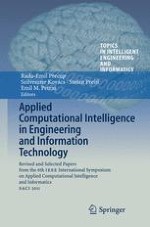This book highlights the potential of getting benefits from various applications of computational intelligence techniques. The present book is structured such that to include a set of selected and extended papers from the 6th IEEE International Symposium on Applied Computational Intelligence and Informatics SACI 2011, held in Timisoara, Romania, from 19 to 21 May 2011. After a serious paper review performed by the Technical Program Committee only 116 submissions were accepted, leading to a paper acceptance ratio of 65 %. A further refinement was made after the symposium, based also on the assessment of the presentation quality. Concluding, this book includes the extended and revised versions of the very best papers of SACI 2011 and few invited papers authored by prominent specialists. The readers will benefit from gaining knowledge of the computational intelligence and on what problems can be solved in several areas; they will learn what kind of approaches is advised to use in order to solve these problems. A very important benefit for the readers is an understanding of what the major difficulties are and the cost-effective solutions to deal with them. This book will offer a convenient entry for researchers and engineers who intend to work in the important fields of computational intelligence.
